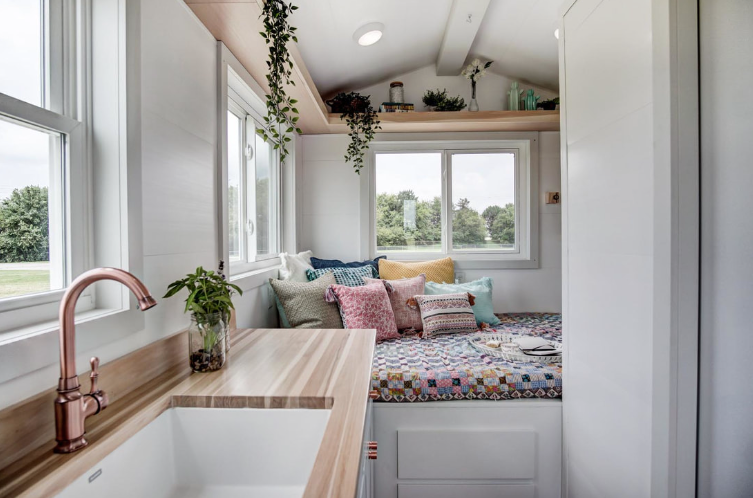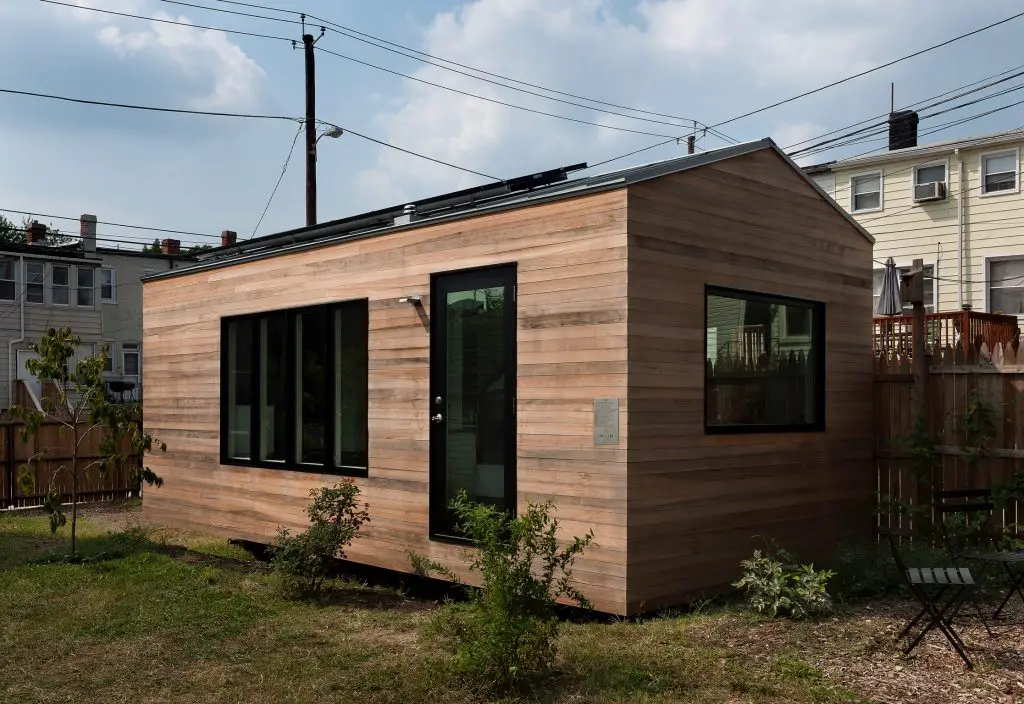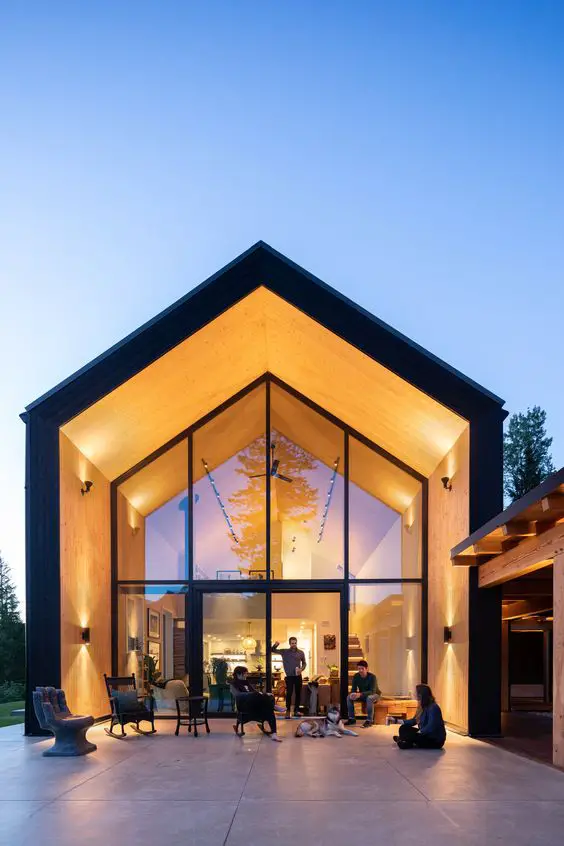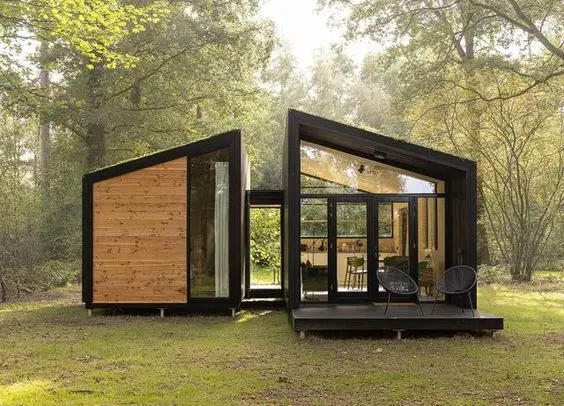Spread the love !
How to Create a Floor Plan for a Tiny House
Are you all set to give shape to your tiny house design? If yes, then drawing your house’s floor plan by hand is a smart idea. It is a stage where you get to work with your thoughts, dreams, concepts, and translate them into reality. However, in the beginning, the task might seem daunting! But when you divide the task into baby steps, your tiny house planning can feel a bit less stressful.
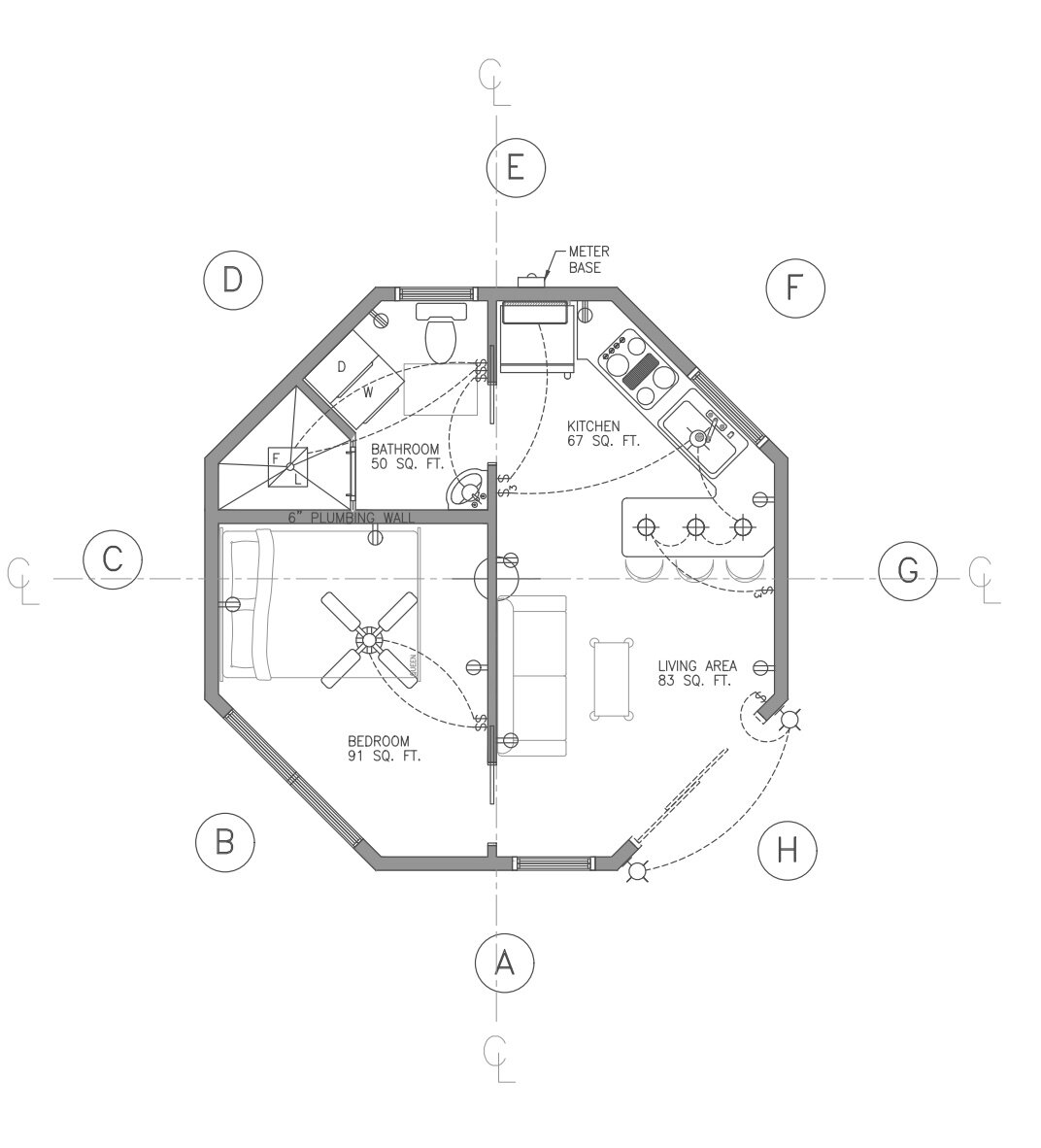
Don’t discard your imagination
Your imagination is the first step to create the tiny house floor plan and what I think makes micro-homes so unique! I suggest you resort to the technique of the “bubble diagram.” It is a clever technique to represent each room and area of the tiny house visually, I myself am a visual person I feel. Make a list of all the house rooms you want and organize the items in a group. For instance, you can group the living room and dining table to use the same tables for standard functions.
Once you complete the grouping you can cut them into square or circle pieces. I like square since more than likely your trailer is square. Here it would help if you used your imagination. Start to play around with the location of the rooms and the connection each has with the other in the tiny house! For instance, think whether you would want the living room and the dining space close to one another? If yes, why would you like this arrangement? How is this arrangement going to benefit you? Think about the kitchen and bathroom space? Where do you want them to get located in the tiny home?
Do you want the bathroom and kitchen close to each other? If yes, you can start to place both the circle on one end and arrange the remaining aspects like dining, sleeping, stairs, and relaxing close by. In this process, you need to use your visualization skills at their best. Visualize the best-case scenario for the room arrangement in your tiny house. You need to ensure that the tiny house plan is useful in space and offers maximum comfort. While you imagine and visualize, ask yourself a few questions, such as:
- Will you be able to move quickly in the tiny home?
- Can you add-in all the items that you wanted to include in your dream micro house?
- Will the floor plan look better if you moved the location of the rooms?
- How does the trailer effect where rooms are? Could I utilize more space on the tongue? Where are the wheels?
Once you get done assessing every possible scenario, you will get convinced of the floor plan. From here, you can move onto the next step.
Let’s get started on a tiny house floor plan
It’s always good to start the old-school manner! All great ideas occur first on paper. Here it would help if you got sketching. However, a drawing is useful when you do it to scale, as it enables you to understand the size of the elements and their connection with other factors for measuring. You can use graph paper to start sketching. Choose a graph paper that doesn’t have an intense grid. If you want, you can get your graph paper printed as well. Use a pen, pencil, or a magic marker to make it easy for you to work.
It’s best if the grid square equals an accessible foot fraction, such as 3′”, 6″ or even 1′. You can select one of these (for instance, 6″) and then multiply it by the total number of grid squares in the paper. It could be 30 x 39, which can give you 180×234. You can also divide the inches by 12 for getting the feet. Hence, on the graph paper, you will have a room that is 15’ wide as well as 19’-6” in length. Here, a 24″ square table can be four grid squares wide by four grid squares long.
- Get architectural drawing software
When you are making the tiny house drawing, you can use architectural drawing software or even hire one for your final drawings ( I hired someone and it cost about $900). Today, you will come across several software programs that are costly, affordable, and free. The best designers make use of AutoCAD, but you can do without this in the beginning. You will find a web floor plan design tool free of cost by the same company. And just in case you have other software in mind, you can use the same for your design.
- SketchUp
A lot of tiny house planner would use SketchUp. It is a 3D modeling program free of cost that is easy to learn and use. When you use this software, you can design the tiny house floor plan, obtain a full-scale 3D design, and zoom into other tiny house details. For tutorials, you can browse online and use video tutorials and learn a lot from Youtube.
You need to know how big things are in your tiny house
You shouldn’t overlook the wall thickness! It is an easy task. However, when you ignore the wall thickness, it gets added up. Generally, a 2×4 stud wall having a ½” drywall on both sides is 41/2″ thick.
You also need to know the doors as most residential door sizes vary. The hose doors range in breadth, generally in 2″ increments. A standard front door is three inches wide on most new houses and has a height between six and eight feet. However, this is very wide when you are designing your own tiny house floor plan. The old front door size used to be two inches thick and eight feet tall. You need to think about the most significant furniture piece and assess if it will fit the front door measurement. Ensure you draw a door swing in your floor plan. You also have to ensure that the door swing doesn’t hit the other doors, furniture, or fixtures. Do you have a tight space? If yes, you can opt-in for a pocket door. The options are endless but it’s always good to keep these questions constantly in the back of your head throughout this process.
- Your windows are essential
Secret time, windows make any tiny houses feel bigger than they actually are. It’s the number one thing I didn’t cheap out on and made sure there was plenty of them along with finding a balance for other walls to utilize space for other things such as TV or shelving. Make sure to create a tiny house floor plan by drawing windows in them. The window sizes also vary drastically. The common breadth for a standard floor plan is usually 1’-6” and 2’-6”. If your windows swing, you need to draw the swing on your floor plan and state that.
- Assess the tiny house furniture
You have to get practical about the furniture in your home space. Furniture occupies space. So, you need to obtain a measuring tape and measure the house furniture and yourself on it. You can browse online for multiple generic dimensions and they seem pretty accurate. This allows you to make sure you have enough space for that comfy couch for Netflix!
- Know the kitchen dimensions
Most kitchen cabinets are usually 24″ in depth that comes with a counter, 25-1/2″ in-depth. The generic cabinet breadths are 3″ increments. The upper cabinets are generally 12″ in-depth and have the same breath. Usually, 36″ of your workspace needs to get enabled in front of your cabinets. The fridge should be taken into account also. Do you think you need a large fridge? I have used apartment-style fridges that seem to be perfect for my space and food needs.
- Utilizing corners in a tiny house bathroom
Bathrooms can quickly get small in tiny homes. I believe this is because it’s one of the very few places that actually has a door. The corners are the most underutilized space in most homes let alone the bathroom. While designing the Deltec bathroom, I made sure to maximize my space in there with the corners. The shower and sink are in the corners and this really opens up the floor space in there. I would have put the toilet in the corner but there was certain square footage it had to be away from the sink per Sarasota county.
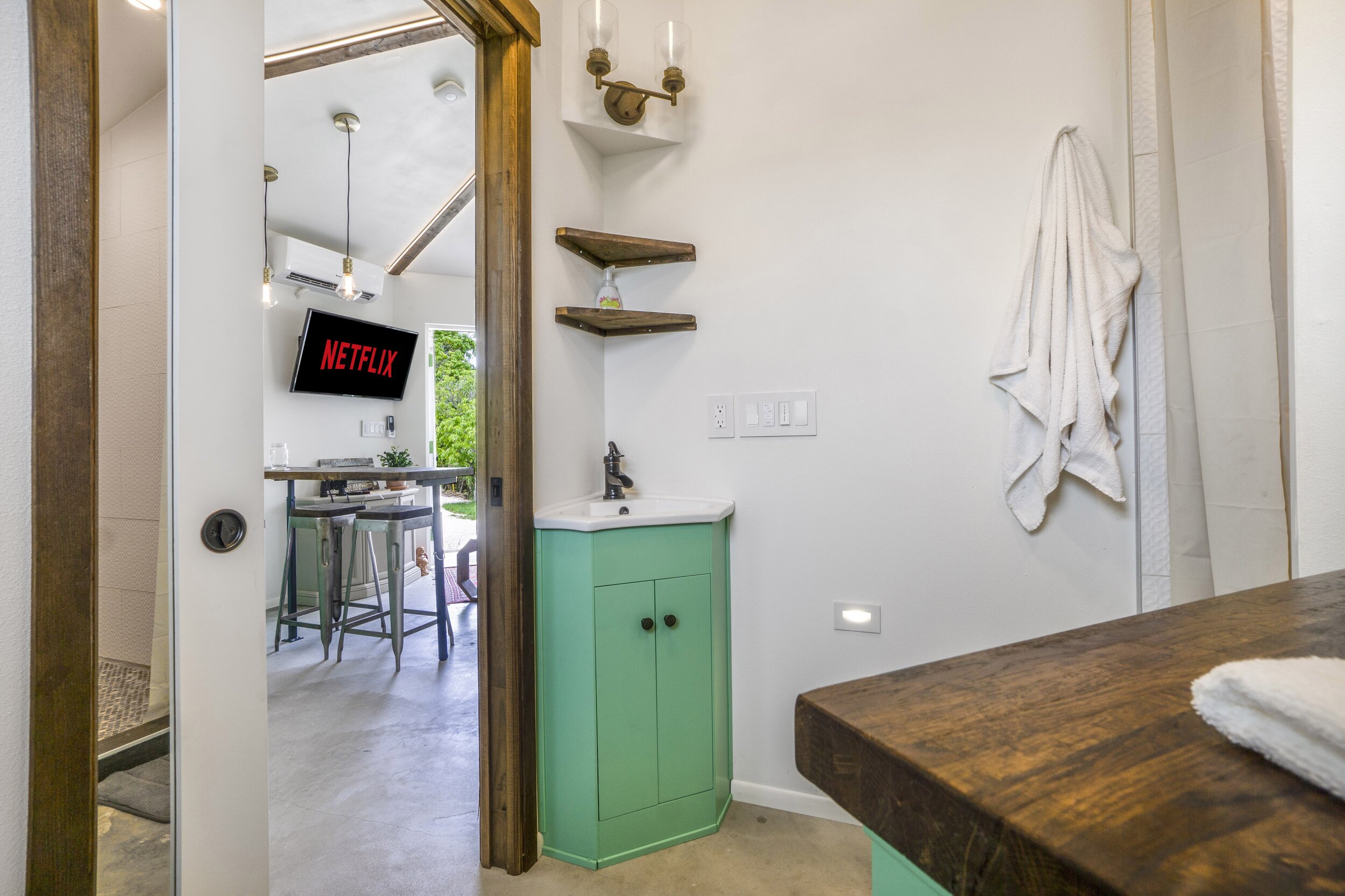
A few special considerations in your floor plans
When you create a tiny house floor plan, you have to include a few special considerations. They are:
- Plumbing walls – Do you have a plumbed toilet? If yes, the plumber needs to run the vent pipe through it vertically. Tiffany is under the sink and not plumed outside. During the hotter months in Florida, I notice a smell coming from it and moisture so I have to keep the cabinet open for a bit. Hence, it is best to position it close to a wall in order to divert outside.
- Passive solar design – Window placement and orientation are the main factors of a passive solar system. You can browse online and read more details about this to get a better idea.
- Shear walls – If there is a narrow and longhouse, the side-to-side forces generated from earthquakes and winds will place maximum strain on short-end walls. It is the wall sheathing that can resist such shear forces. Hence, it is good to not fill these walls with windows and doors that can minimize the sheathing space. In your plan, try and keep the windows and doors slightly away from every exterior corner. It will provide more strength to the house if that is something you are concerned about.
Are you searching for more inspiration?
When you set out to design your own tiny house floor plan, any relevant information will help you.
Few aspiring tiny house owners also feel the need to learn about feng shui. Here you can find some of the useful tips on home design and layout. You can use these principles for your tiny house floor plan by adding what you think is essential for you.


